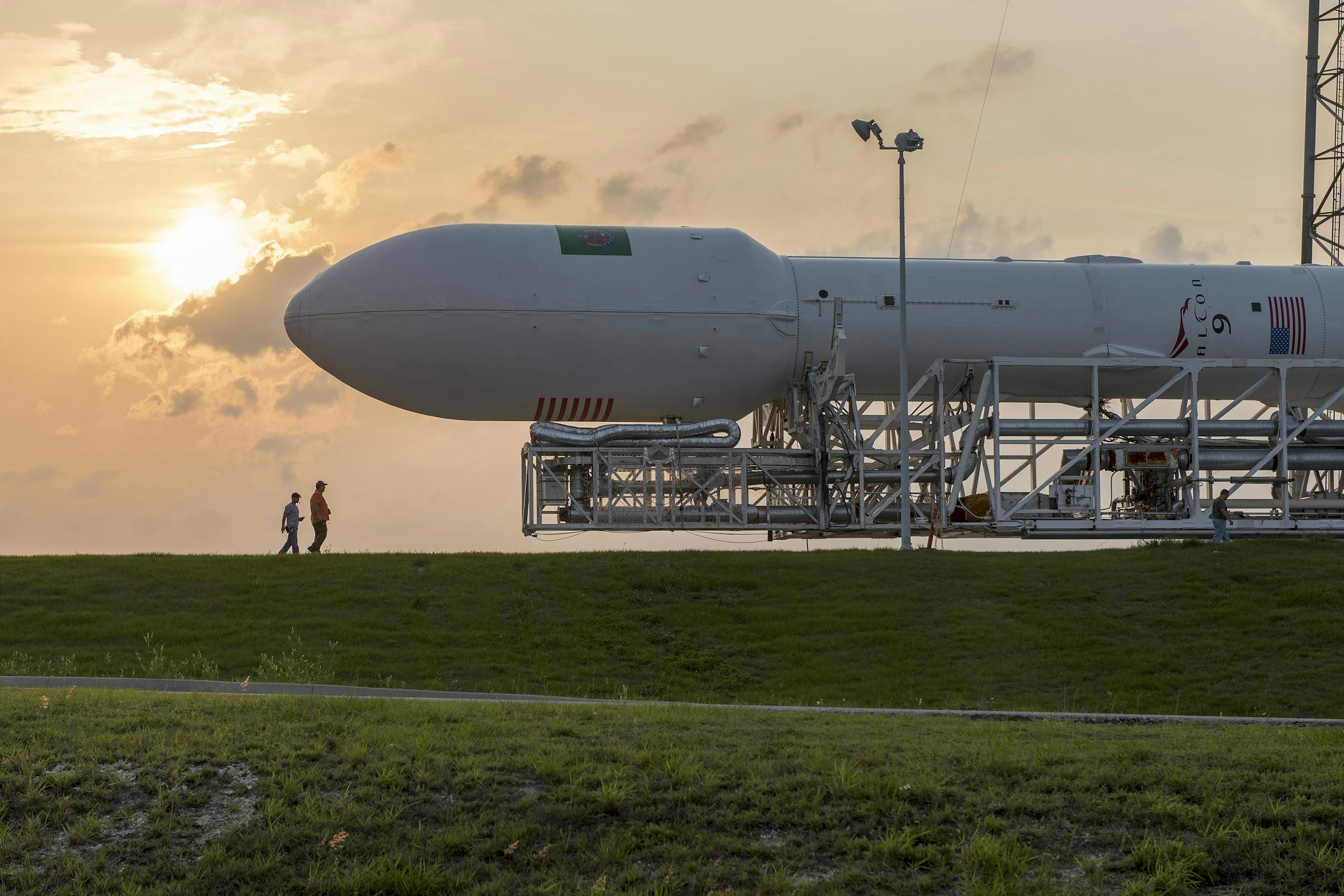SpaceX’s Starship Flight 10: A Monumental Leap Toward Starlink V3 and Beyond

Introduction: A Crucial Success After Previous Setbacks
SpaceX’s tenth Starship test flight, launched on August 26, 2025, marked a pivotal achievement for the company’s ambitious space program. This mission represented a dramatic turnaround after four consecutive failures earlier in the year, demonstrating critical capabilities needed for SpaceX’s future plans including Starlink V3 satellite deployments and eventual crewed missions to the Moon and Mars.
The flight achieved multiple historical firsts for the Starship program, including a successful splashdown of both stages, demonstration of the payload deployment system, and an in-space engine relight—milestones that had eluded previous test flights.
Mission Overview and Key Achievements
Flight Profile and Objectives
Starship Flight 10 followed a suborbital trajectory similar to Flight 9, with both stages targeting controlled splashdowns—Super Heavy in the Gulf of Mexico and Ship in the Indian Ocean. The mission carried eight Starlink V3 mass simulators (dummy payloads matching the size and weight of actual V3 satellites) to test the new payload deployment system.
| Component | Details |
|---|---|
| Launch Date | August 26, 2025, 23:30 UTC |
| Booster | B16 (Block 2) |
| Ship | S37 (Block 2) |
| Payload | 8 Starlink V3 mass simulators (~16,000 kg) |
| Launch Site | Starbase, Texas, OLP-1 |
| Flight Duration | Approximately 47 minutes |
Major Milestones Accomplished
Flight 10 successfully demonstrated several technologies essential for Starship’s operational future:
- Successful splashdown of both stages: Both Super Heavy and Ship achieved controlled water landings despite intentional stress testing.
- Payload deployment system test: The first successful demonstration of Starship’s “Pez Dispenser” satellite deployment mechanism.
- In-space engine relight: A critical Raptor engine restart in space over Africa, essential for future orbital maneuvers and deorbiting procedures.
- Re-entry survival: Despite significant damage during atmospheric re-entry, Ship maintained control and completed its landing burn.
- Real-time data connectivity: Maintained continuous HD video and data streams throughout the mission using four Starlink terminals on Starship, even during re-entry.
Technical Analysis of Flight Performance
Booster Performance and Landing
Super Heavy B16 performed exceptionally well despite an engine outage shortly after launch. The booster executed a directional flip during stage separation and tested an engine-out landing burn scenario where one of the center engines was intentionally disabled. After completing its landing burn, the booster briefly hovered over the water before cutting power and splashing into the Gulf of Mexico, where it exploded on impact.
The descent profile used a less aggressive angle of attack than previous missions, addressing issues identified in prior flights that led to vehicle breakup.
Ship Performance and Re-entry
Ship S37 demonstrated remarkable resilience during its mission. Approximately ten minutes after executing a brief in-space Raptor engine relight test over Africa, an explosion of undetermined origin occurred within the engine compartment during re-entry at an altitude of approximately 90 kilometers. This severely damaged the aft skirt, and engineers observed some burn-through at the inner trailing edge of the aft flaps.
Despite these challenges, Ship survived re-entry, performed a landing flip, and briefly hovered over the Indian Ocean before tipping over into the water and exploding on impact. SpaceX noted that the vehicle placed itself approximately 3 meters from its targeted splashdown point—an impressive demonstration of landing precision.
| Time | Event | Result |
|---|---|---|
| T-0 | Liftoff | Success |
| T+1:02 | Max Q (peak mechanical stress) | Success |
| T+2:36 | Super Heavy MECO | Success |
| T+2:38 | Stage separation & Ship ignition | Success |
| T+2:48 | Super Heavy boostback burn start | Success |
| T+6:20 | Super Heavy landing burn start | Success |
| T+8:57 | Ship engine cutoff (SECO) | Success |
| T+18:27 | Starlink simulator deployment | Success |
| T+47:00 | Re-entry explosion event | Partial failure |
| T+~47:00 | Ship splashdown | Success (with damage) |
Starlink V3 Deployment Capabilities
The “Pez Dispenser” Payload System
A primary objective of Flight 10 was testing Starship’s innovative satellite deployment mechanism—dubbed the “Pez Dispenser”—which will be crucial for deploying next-generation Starlink V3 satellites. This system functions similarly to the popular candy dispenser, mechanically ejecting satellites from the spacecraft’s payload bay.
The successful deployment of eight mass simulators confirms the basic functionality of this system, though further refinement will likely be needed for operational missions.
Starlink V3 Satellite Capabilities
The V3 satellites represent a massive upgrade over previous generations. With each satellite having approximately 1 Tbps downlink capacity and 160 Gbps uplink capacity, they offer 10x the downlink and 24x the uplink capacity of the current V2 Mini satellites.
| Specification | V1 Satellites | V2 Mini | V3 |
|---|---|---|---|
| Mass | ~260 kg | ~575 kg | ~1,900 kg |
| Downlink Capacity | ~20 Gbps | ~96 Gbps | ~1 Tbps |
| Uplink Capacity | ~5 Gbps | ~6.7 Gbps | ~160 Gbps |
| Laser Links | Limited | Improved | Advanced (4 Tbps) |
| Orbital Altitude | ~550 km | ~500-600 km | ~350 km |
The V3 satellites will operate at a lower altitude of approximately 350 km, reducing latency to under 20 milliseconds (potentially as low as 5 ms), making real-time applications like gaming viable over satellite connections. They also feature laser inter-satellite links that transmit data 40% faster than fiber optics in a vacuum.
Implications for SpaceX’s Future Operations
Overcoming a String of Failures
Flight 10’s success was particularly significant given SpaceX’s recent challenges with the Starship program:
- Flight 7 (January 16, 2025): Exploded over the Caribbean due to propellant leaks caused by harmonic oscillations
- Flight 8 (March 6, 2025): Destroyed during ascent due to a hardware failure in a central Raptor engine
- Flight 9 (May 27, 2025): Reached trajectory but lost attitude control during coast phase, disintegrated on re-entry
- Pad Explosion (June 18, 2025): Ship 36 destroyed during ground testing, damaging facilities
The successful Flight 10 demonstration indicates that SpaceX has addressed many of the issues that plagued these previous attempts, particularly those related to second-stage performance.
Path Toward Operational Missions
With the Pez Dispenser deployment system now validated, SpaceX can technically begin launching actual Starlink V3 satellites on future Starship flights, even while continuing to refine re-entry and landing capabilities. This approach allows the company to leverage Starship’s massive payload capacity for operational missions while still developing full reusability.
SpaceX has one more already-built Starship Block 2 available for Flight 11, expected in the next month or two. After this, the company will pause flights until the Starship Block 3 design is ready, likely in late 2025 or early 2026.
Larger Ambitions: Moon, Mars, and Beyond
Starship’s successful test moves SpaceX closer to its ambitious long-term goals:
- Lunar missions: NASA is counting on a modified Starship as the Human Landing System for Artemis III, currently scheduled for 2027
- Mars colonization: SpaceX targets uncrewed test missions to Mars as early as 2026, with crewed missions potentially following in subsequent launch windows
- Space infrastructure: Starship’s massive capacity could revolutionize space station construction and space telescope deployment
Significant technical challenges remain, particularly in developing orbital refueling capabilities and perfecting the heat shield for full reusability. No rocket has ever demonstrated the rapid-fire launch cadence required for SpaceX’s propellant transfer concept, which would require 10-20 tanker flights to refill a lunar-bound Starship in orbit.
Conclusion: A New Chapter for Starship
SpaceX’s tenth Starship test flight represents a watershed moment for the program. After a challenging period with multiple high-profile failures, the company has demonstrated concrete progress toward making Starship an operational launch system.
The successful demonstration of the Pez Dispenser deployment system specifically paves the way for Starlink V3 deployments, which will dramatically increase the capacity and performance of SpaceX’s satellite internet constellation. Each Starship launch could carry up to 60 V3 satellites, delivering 20 times the bandwidth of a Falcon 9 mission with comparable Starlink satellites.
While challenges remain—particularly in achieving full reusability and solving the orbital refueling puzzle—Flight 10 proves that Starship is evolving from an experimental system to a functional launch vehicle capable of beginning operational missions in the near future.
As SpaceX continues to iterate rapidly, with Block 3 vehicles already in development and Mars missions tentatively planned for next year, the success of Flight 10 suggests that the company’s ambitious vision of making humanity a multi-planetary species may be closer to reality than many previously believed.


